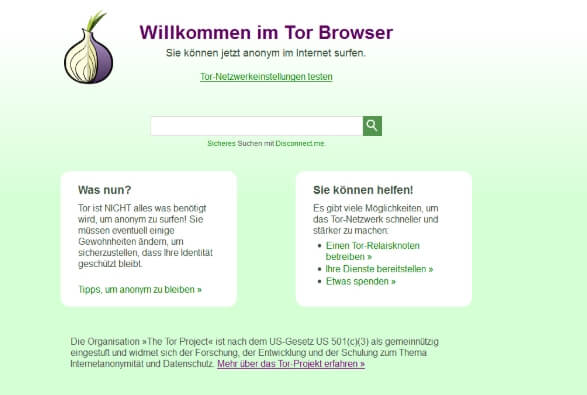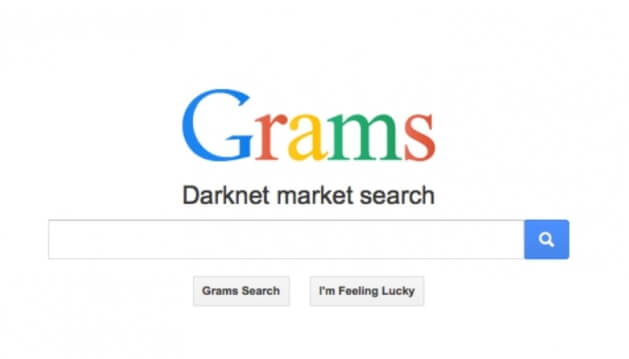Google & Bing know almost everything. Why only “almost”? With a market share of about 92% Google is the top performer among the search engines, Bing with about 3% is clearly beaten to place 2, but still clearly ahead of other candidates. Both search engines capture all their data automatically and are for at least 95% of the world’s population the start page to the Internet.
Everything that appears on the first pages is visible on the Internet and is clicked on by users. Everything else is ignored. But even all results collected by Google & Co. are not complete. How many percent of the Internet is not indexed by search engines is not known. It is also quite easy to hide a website from Google & Co.
What is the Deep Web?
Everything that is not indexed by search engines is called “Deep Web”. And then there is a specially encrypted area on the web, the so-called darknet. By the way, this is not only for illegal purposes. Technically the Darknet is part of the Deep Web. It is also sometimes called “Hidden Web”, and sometimes the words Darknet and Deep Web are used synonymously.
Is the darknet illegal?
No, the darknet is not illegal. On the contrary: the Darknet is one of the last bastions of freedom of speech, so the network is also used worldwide by journalists, human rights organisations, regime critics and repressed minorities. At the same time, however, it is unfortunately also a playground for criminals.
The Darknet is a network without censorship and surveillance – with all its advantages and disadvantages. For example, some newspapers like the New York Times have set up their own pages in Darknet so that informants can transmit confidential information anonymously.
By the way, well-known IT journalists like Mike Tigas have their own homepage in Darknet – but this also exists “on the normal” Internet.
What and where’s the darknet?
How do I access the Darknet? Is Darknet forbidden? – These are probably the usual questions in connection with this part of the Internet. Darknet uses the same parts of the Internet that all other Internet services use: Websites, e-mail and file sharing. All this, like the rest of the Internet, is freely available – you just have to know how to get there and where to search.
If you want to surf the Darknet, you first need anonymous access to the Tor network. Tor is originally an abbreviation for “The Onion Router” and it is a network for anonymizing connection data, which has been in operation since about 2002 and was mainly developed by students at Cambridge University. You will be able to read the word “onion” several times in the following article.
The word onion is a reference to the different layers that have to pass through the data on the way from the user to the website: There is always a whole series of servers involved in the connection between the user and the server in order to create the greatest possible anonymity. Currently, about 2 million people use the Tor network every day.
As to the technical background of the Tor network, anyone who searches the “normal” Internet, e.g. Google, is connected directly to Google using their own IP address. In the Tor network, there are at least three other servers (so-called “nodes”) between your IP and the website you want to visit, and it is therefore impossible to trace where the visitor comes from. The source code on which the Darknet is based is open source and can be viewed by everyone. If you want, you can also actively participate and provide your own server, which then acts as an anonymous node in the darkweb or Tor network. Of course, it is also possible to put your own pages into Darknet.
What is a Tor Browser?
The Tor Browser is a special version of Firefox that automatically selects the Tor network as the Internet access point. The Tor Browser is also included in our Windows compatible Cyber Shield software!
Also for other operating systems and your mobile phone there are solutions for Darknet browsers to download, e.g. the “Tor Browser” for MacOS, the “Onion Browser” for iPhone & iPad and Orfox, Orbot or “Tor Browser” – all for Android. You probably have the biggest choice as a user of a device under Android.
You can download a free version of the Tor Browser for Windows and others from the Tor Project website: https://www.torproject.org/projects/torbrowser.html.en

But we recommend the version in our software Cyber Shield, because the Tor Browser in this version is additionally doubly secured and no access to your computer can take place!
Darknet: Please be careful!
As everywhere in life, you should bring a healthy portion of skepticism when using the Darknet. Where no censorship or surveillance is possible, you will also find a bunch of shady characters. But there are not only trading places for drugs or weapons! So visiting Darknet department stores may not be the best idea.
You shouldn’t give your personal data anywhere and you shouldn’t upload self-created pictures & videos anywhere. Downloads from Darknet are potentially dangerous and you shouldn’t buy anything in Darknet. Do yourself a favor.
Just don’t believe or trust anyone when surfing Darknet! Remember: The other users are anonymous too! Sometimes it is even advisable to mask your own webcam if you move in the Darknet. But that might be a bit too paranoid.
We hope we didn’t scare you now? But a little caution can’t hurt while surfing the Darknet!
Guide through the Darknet
In Darknet there are none of the usual domains with the endings .com, .net, .org or similar. The extension used in Darknet is .onion.
- The most popular page in Darkweb is probably the Onion version of Facebook. This page allows you to use Facebook anonymously without fear of tracking. This service is also the only option for people from countries like China, Iran or some African countries where Facebook is censored and blocked. The address is: https://www.facebookcorewwwi.onion/
Many websites in Darknet don’t stay online very long. That’s why the Darknet – like the rest of the Internet – also has search engines and more or less up-to-date link lists.

The top dog in the Darknet search engines was Grams for a long time. Almost the Google of Darknet. With Grams it was possible to search the Darknet – and it looked quite similar. Whereby Grams did not actively search the Darknet by itself, but a website always had to be registered with Grams first. But Grams has disappeared from the scene for several months now.
- A current alternative is Torch. The current address of Torch is http://xmh57jrzrnw6insl.onion
- Wiki Links (http://wikilink77h7lrbi.onion/), Deep Weblinks (http://deepppr5ooheo7n6.onion/), OnionDir, Tor Links or Hidden Wiki (http://zqktlwi4fecvo6ri.onion) are typical link directories, with all their advantages and disadvantages.
And don’t be surprised: The websites and link portals in Darknet remind you of websites from the 90s of the last millennium. So the Darknet can create a nostalgic atmosphere. 😊
- Of course there is also e-mail in the Darknet! One provider is e.g. TorBox, where you can create an anonymous account for free. However, you can only send and receive e-mails within the Darknet. The service can be reached at the following address http://torbox3uiot6wchz.onion/
- If you want to make money transfers in Darknet, you have to search for services like OnionWallet. OnionWallet & Co. act similar to PayPal and resemble a digital purse. The link to the Bitcoins money box is as follows: http://aewfdl3tyohbcenp.onion/
- An alternative is e.g EasyCoin: http://ts4cwattzgsiitv7.onion/
We wish you a lot of fun on your journey through the Darknet. But we cannot say it often enough: Be careful!

